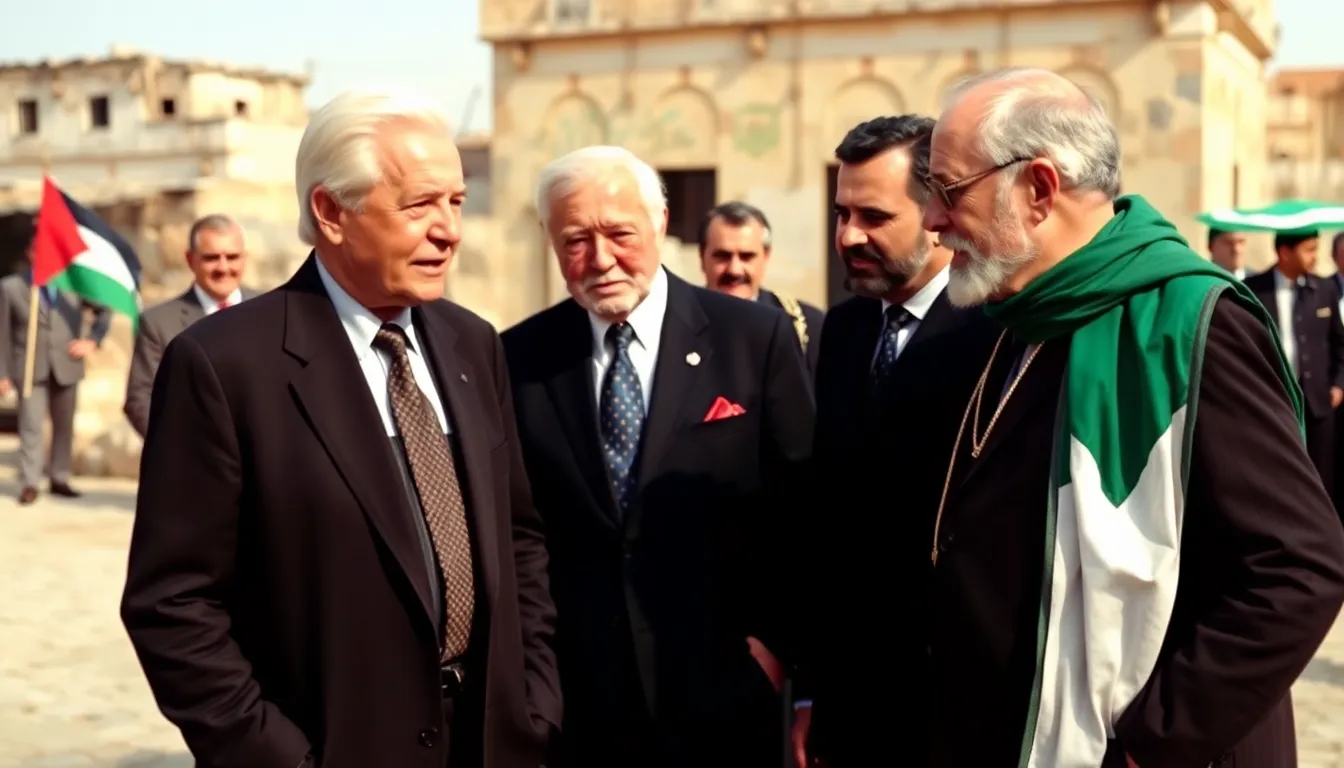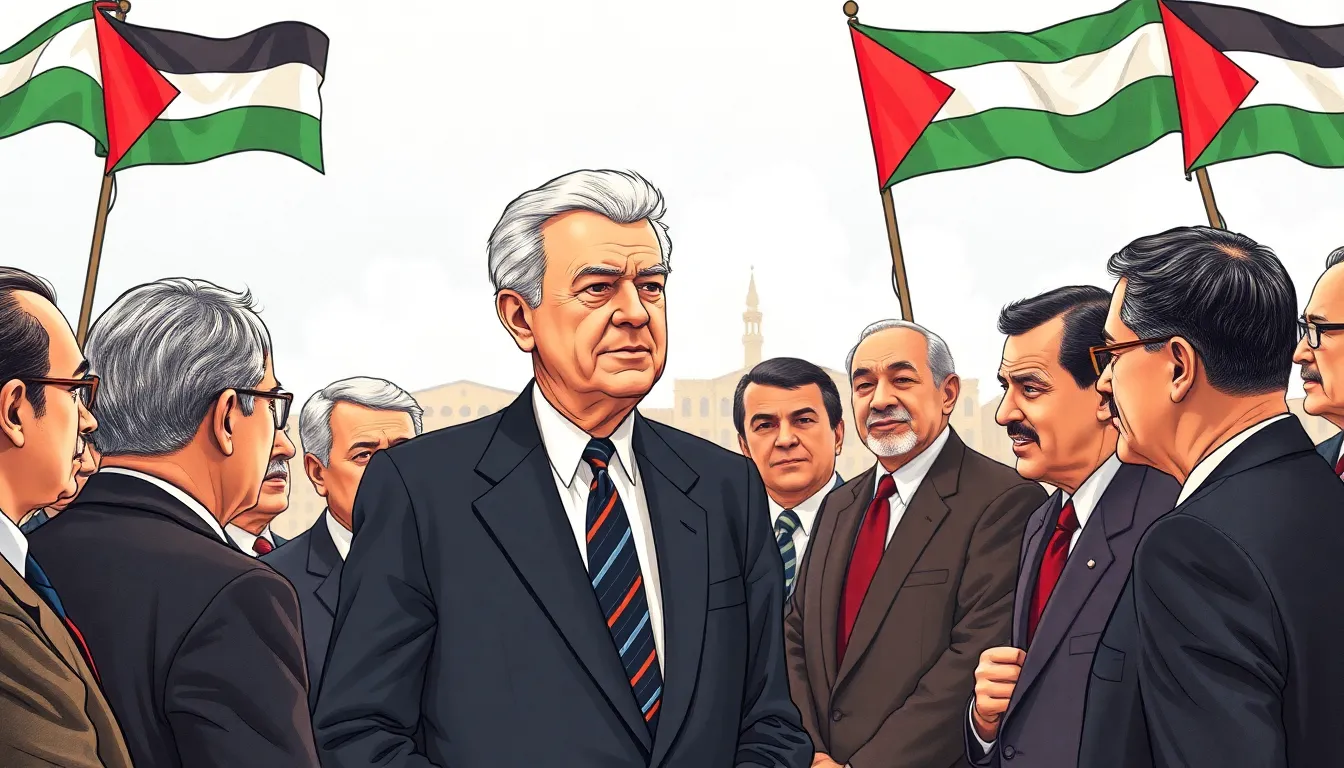When a former president decides to step into the spotlight, it’s usually for a good reason. But when Jimmy Carter found himself in Palestine, the world took notice—not just for his political stature but for a photo that captured a moment in time. This isn’t just any snapshot; it’s a blend of history, diplomacy, and a dash of unexpected charm that has sparked conversations across the globe.
Table of Contents
ToggleOverview of Jimmy Carter’s Visit to Palestine
Former President Jimmy Carter’s visit to Palestine marked a pivotal moment in U.S.-Middle Eastern relations. The trip occurred in April 1979 during his efforts to promote peace in the region. Observers noted how his engagement with Palestinian leaders reflected a commitment to diplomacy and dialogue.
Photos taken during this visit captured not just the political atmosphere but also the personal interactions that defined his approach. One image stands out, showcasing Carter with local leaders against the backdrop of historic landmarks. This photograph embodies the complexities of the peace process and highlights Carter’s willingness to connect with diverse communities.
Reactions to Carter’s visit varied across the political spectrum. Some Palestinian leaders expressed hope for renewed negotiations, while others remained skeptical about U.S. intentions. The presence of an American president in the region energized discussions about human rights and sovereignty.
Context surrounding the visit included ongoing conflicts and the search for resolutions. Expectations for Carter to mediate between conflicting parties were high. Conversations between Carter and Palestinian representatives focused on the need for self-determination and mutual respect.
Carter’s approach emphasized understanding rather than confrontation. Many analysts noted his ability to foster dialogue in a region marked by tension. Strong relationships formed during this visit laid groundwork for future discussions regarding peace initiatives.
Jimmy Carter’s presence in Palestine and the iconic photo symbolize more than just a visit; they represent hope and the complexities inherent in striving for peace in a fractious world.
Significance of the Photo


The photograph from Jimmy Carter’s 1979 visit to Palestine holds considerable importance. It captures a moment of diplomatic engagement between U.S. leaders and Palestinian representatives.
Historical Context
This visit occurred during a critical period in Middle Eastern politics, marked by the aftermath of the 1978 Camp David Accords. Carter sought to ease tensions and promote dialogue in a region fraught with conflict. Meetings with Palestinian leaders emphasized the significance of self-determination and the need for political resolution. Such discussions laid a foundation for future U.S. involvement in peace efforts, influencing subsequent administrations. The photograph serves as a tangible reminder of these historic negotiations and the hopes associated with them.
Cultural Impact
The imagery from Carter’s visit transcends politics, resonating within cultural narratives on peace and reconciliation. It embodies the aspirations of those yearning for recognition and dialogue amid adversity. Responses to the photograph reflect broader sentiments, with some viewing it as a beacon of hope and others expressing skepticism about U.S. intentions. Artists, historians, and activists often reference the image, utilizing it as a catalyst for discussions on justice, identity, and the pursuit of peace. Through cultural lenses, the photograph continues to evoke strong emotions and stimulate meaningful discourse on the ongoing Israeli-Palestinian conflict.
Analysis of the Photo
The analysis of the photograph from Jimmy Carter’s visit to Palestine reveals deeper meanings and emotional connections.
Composition and Imagery
The composition captures Carter surrounded by Palestinian leaders against iconic landmarks. This setting emphasizes both context and culture, integrating historic sites with contemporary political dialogue. Vivid colors enhance the imagery, presenting a stark contrast between the officials’ expressions and the backdrop. Strategic framing directs attention to Carter’s engagement with the local figures, showcasing a sense of unity amidst complexity. Such visual elements facilitate a powerful narrative regarding peace efforts, inviting viewers to reflect on the significance of that moment in time.
Emotional Resonance
Emotional resonance permeates the photograph, evoking a shared yearning for peace and recognition. Many observers express feelings of hope and skepticism through their interpretations, capturing the duality of sentiment present during Carter’s visit. Connections to broader narratives around the Israeli-Palestinian conflict intensify the photo’s impact, making it a symbol of aspiration. Viewers often find themselves recalling the ongoing struggles for identity and justice, with this image serving as a poignant reminder of past negotiations. The photograph continues to inspire discussions about peace, highlighting its role in shaping cultural and political dialogues today.
Reactions and Interpretations
Carter’s visit sparked a range of reactions, impacting both media narratives and public sentiment.
Media Response
Coverage of the visit emphasized its historic significance, highlighting the image of Carter alongside Palestinian leaders. In addition to political implications, media outlets focused on the human aspects of the meeting, underscoring the emotional weight of the photograph. Journalists noted the symbolic nature of these interactions, contrasting Carter’s gestures with prevailing tensions in the region. Various news reports framed the visit within the context of broader peace efforts, analyzing its potential to influence future diplomatic actions. While some media praised the visit as a step toward reconciliation, others approached it with skepticism, questioning the sincerity of U.S. intentions.
Public Reactions
Public sentiment varied greatly, with many Palestinians expressing cautious optimism. Some felt inspired by the photograph, viewing it as a sign of hope for diplomatic engagement. Local leaders regarded Carter’s presence as a possible shift towards self-determination and mutual respect. Conversely, skepticism persisted among segments of the population, reflecting a long-standing wariness toward external involvement. Additionally, activists used the image to foster dialogue about justice and identity, reinforcing its importance in ongoing discussions. Community gatherings and discussions frequently referenced the photograph, underscoring its resonance with collective aspirations.
The photograph of Jimmy Carter’s visit to Palestine remains a powerful symbol of hope and complexity in the quest for peace. It captures a moment where diplomacy met cultural significance, reflecting the aspirations of many for understanding and reconciliation. As discussions around the Israeli-Palestinian conflict continue to evolve, this image serves as a reminder of the importance of dialogue and respect among diverse communities.
Carter’s engagement with Palestinian leaders during this visit resonates today, inspiring activists and historians alike to reflect on the ongoing challenges and opportunities for peace. This iconic photograph not only documents a historical event but also fuels conversations about justice, identity, and the enduring pursuit of harmony in a region marked by conflict.




